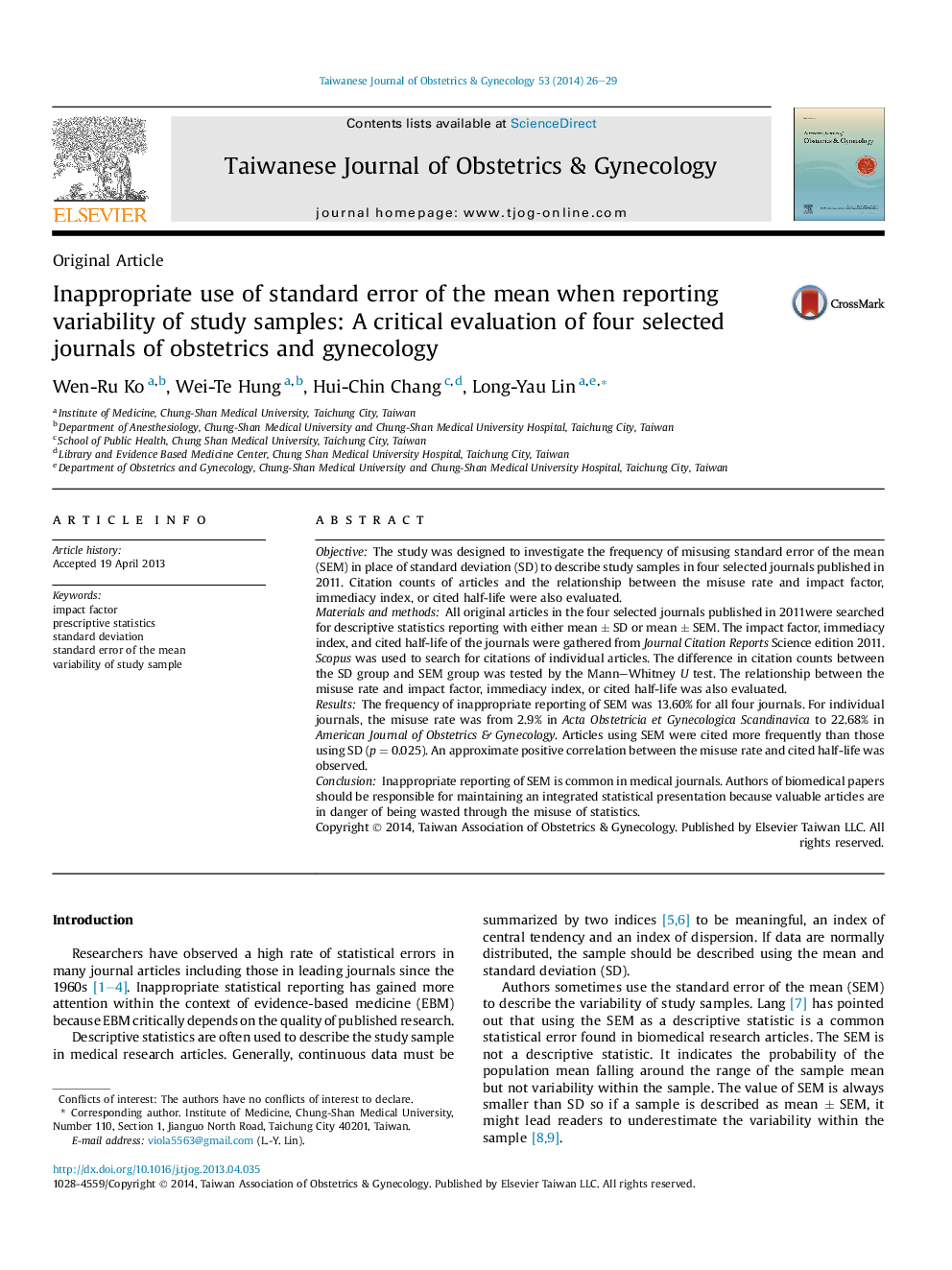| Article ID | Journal | Published Year | Pages | File Type |
|---|---|---|---|---|
| 3975389 | Taiwanese Journal of Obstetrics and Gynecology | 2014 | 4 Pages |
ObjectiveThe study was designed to investigate the frequency of misusing standard error of the mean (SEM) in place of standard deviation (SD) to describe study samples in four selected journals published in 2011. Citation counts of articles and the relationship between the misuse rate and impact factor, immediacy index, or cited half-life were also evaluated.Materials and methodsAll original articles in the four selected journals published in 2011were searched for descriptive statistics reporting with either mean ± SD or mean ± SEM. The impact factor, immediacy index, and cited half-life of the journals were gathered from Journal Citation Reports Science edition 2011. Scopus was used to search for citations of individual articles. The difference in citation counts between the SD group and SEM group was tested by the Mann–Whitney U test. The relationship between the misuse rate and impact factor, immediacy index, or cited half-life was also evaluated.ResultsThe frequency of inappropriate reporting of SEM was 13.60% for all four journals. For individual journals, the misuse rate was from 2.9% in Acta Obstetricia et Gynecologica Scandinavica to 22.68% in American Journal of Obstetrics & Gynecology. Articles using SEM were cited more frequently than those using SD (p = 0.025). An approximate positive correlation between the misuse rate and cited half-life was observed.ConclusionInappropriate reporting of SEM is common in medical journals. Authors of biomedical papers should be responsible for maintaining an integrated statistical presentation because valuable articles are in danger of being wasted through the misuse of statistics.
